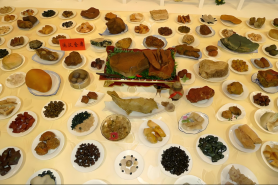满汉全席:传说中的饕餮盛宴

In Chinese history, the famous Manchu Han Imperial Feast (Man Han Quan Xi) was a grand meal. It was said to include 108 special dishes (30 dishes from Zhejiang and Jiangsu cuisines <菜肴>, 12 dishes from Fujian cuisine, 12 dishes from Cantonese cuisine, 12 dishes from Manchu cuisine, 12 dishes from Beijing cuisine, and 30 dishes from Shandong cuisine). This feast was only for emperors.
During the Qing Dynasty, the Manchu and Han banquet (筵席) started. At the beginning, Manchu and Han dishes were served apart. But the Qing emperors wanted to unite these two important groups, so they ordered them to live, work, and eat together. Later, these two cuisines combined.
During Emperor Kangxi’s rule (1654-1722), the mixing of Manchu and Han people progressed a lot. Officials from both sides started exchanging more. On New Year’s Day of Kangxi’s 23rd year as emperor, both Manchu and Han dishes were served together for the first time at the imperial feast. This tradition then became a rule in the Qing Dynasty.
This banquet had many delicious foods from around the world, like famous mushrooms, special vegetables, and fruits. They only chose the best ingredients. For example, when they prepared roast pigs, the pigs had to weigh between 12 to 13 kilos and were fed porridge for a few days before being killed to make the meat tastier.
The feast also cared about the tableware, rituals, and other dining manners. Serving the Man Han Quan Xi was complex and fascinating. Even though this isn’t popular in China now, it’s still interesting to learn about.
原创编写 版权所有 侵权必究! 每日更新 个性化阅读 英语飙升!